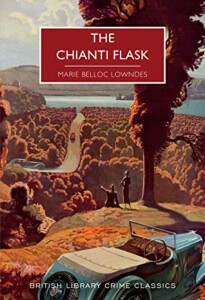 This is a most enjoyable little story featuring the agony of a murder trial and the bizzare nature of what can often follow. This is a wonderful twisting mystery that deserves more attention than it currently gets. Although as in most romantic mysteries, there is some focus a man (in this case a doctor named Mark Scrutton) the lead of the story is without a doubt a woman.
This is a most enjoyable little story featuring the agony of a murder trial and the bizzare nature of what can often follow. This is a wonderful twisting mystery that deserves more attention than it currently gets. Although as in most romantic mysteries, there is some focus a man (in this case a doctor named Mark Scrutton) the lead of the story is without a doubt a woman.
Laura Dousland’s much older husband has passed on, and as a result of the rat poison found in his system, she finds herself on trial for his murder. Old friends, former employers, a doctor acquaintance of her husband’s, and the general public all seem to agree she is innocent. Yet it is the jury that matters, and Laura spends a great deal of time worrying over that fact. While the trial ends relatively early in the book, it and the details surrounding both the trial and her late husband’s death are key to the rest of the narrative.
Originally published in the 1930s, it includes both an interesting mystery and a strong romance, which intertwine to a great degree and result in some twists that will not be expected by most readers. Even those who begin to suspect some of the twists and turns will find the characters generally entertaining and the romance believable enough. The biggest weakness of the latter will come for some readers in the use of love at first sight, something that modern readers may not accept as readily as was common in the past.
Social structure, race, and gender all play noticeable roles in this story. Laura is a young woman from a relatively respectable background, working class but within an arena considered socially respectable. This helps to keep the public on her side. One of the chief witnesses against her is Angelo Tarugi, an Italian who worked in her household as a cook. While it is never made explicit, the difference in station and nationality nonetheless seem to play a role and how his evidence is treated. It also helps to keep a modern reader on Laura’s side that she disagrees with him without impugning him as an individual while on the stand, suggesting the differences in their testimony are related to the man being mistaken rather than malice or guilt on his part.
This edition has a delightful introduction, which goes into detail on the author and her career. Given these long out-of-print works are often by relatively obscure authors, this is greatly appreciated.
This is a delightful volume, simultaneously feeling like a piece of golden age mystery fiction while also subverting expectations. The Chianti Flask, along with the rest of Marie Belloc Lowndes work, spent a lot of time virtually forgotten. This is a shame as it really is an excellent example of the genre, and stands out amongst works of the time. Easy to recommend to those who enjoy mysteries.
(British Library Press, 2021)
